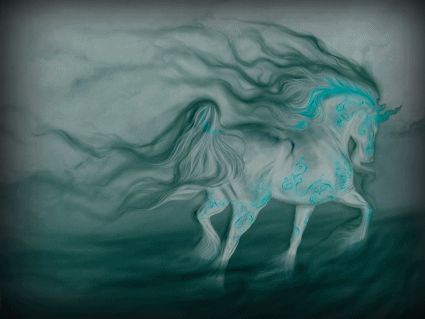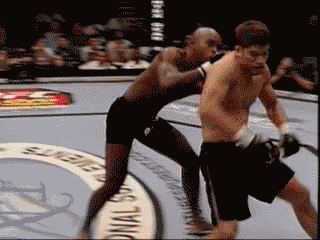Yakuza (ヤクザ or やくざ , Yakuza?), also known as gokudō (極道, gokudō?), are members of traditional organized crime groups in Japan, and also known as the "violence group". A Yak is a derogatory term that refers to the Yakuza. The term is used by Japanese young people and foreign persons familiar with Japanese culture. Today, the Yakuza are among the largest crime organizations in the world. In Japan, as of 2005, there are some 86,300 known members.[1] In Japanese legal terminology, yakuza organizations are referred to as bōryokudan, literally "violence groups", which Yakuza members consider an insult as it can be applied to any violent criminalthe Kabuki-monoCreation 17th centuryActual Number 86 300 members[1]Principals clans 1. Yamaguchi-gumi 2. Sumiyoshi-kai 3. Inagawa-kai 4. Toua Yuai Jigyo KummiaiActivities Blackmail, Illegal gambling, Casino, Prostitution, Smuggling HISTORY Despite their notoriety in modern Japan, the precise origin of the Yakuza is still somewhat the subject of debate. The first historical interpretation of their derivation is from the hatamoto-yakko or Kabuki-mono of the 17th century Genroku Era,[2] who were derivative classes of the low-rank hatamoto, which resembled a quarter of the shogun.[3] Other theories, suggested by the Yakuza members themselves claim their origins are from the machi-yokko, who policed villages by protecting them from the hatamoto-yakko that tried to steal from them, despite their being outmatched by the Hatamoto-yakko in training and strength. Despite their shortcomings, the machi-yakko were regarded as folk heroes similar to those in the stories of Robin Hood, with some groups being made the feature of plays and dramas.[4][5] The derivation from the hatamoto-yakko or Kabuki-mono known for their adoption of strange hair styles and outrageous dress manner refers to a relevant era of the Genroku Period in which kabuki plays, and onnagata were prominent. Despite the different groups, the majority of the events which led to their inception occurred during the Edo period. As peacetime brought about by the destruction of the Toyotomi Clan ensured the Tokugawa shogunate's role of maintaining peace, shogun retainers were no longer required in their role as soldiers[6] and moved from their own catchment areas to live in feudal castles where their income was determined by their daimyō. Due to the isolation of Japan and restriction of foreign trade, Japan's agricultural production and domestic trade greatly improved which resulted in the increase of power in the merchant class and the financial dependency of the samurai upon them -- samurai retainers were paid with rice by their daimyō, and then sold it in markets as a means of generating their salary. As natural disasters, famine and tax increases led to the destabilization of the social hierarchy and the decline of morals due to public dissatisfaction with the government, factions of wayward, leaderless samurai known as ronin began to focus their attention from community service towards generating money through theft and violence towards smaller mercantile villages with disparate policing and little feudal control as they presented less-dangerous means of achieving iniquitous money. However, Yakuza that claim origin from the machi-yakko refute their origins from the hatamoto-yakko due to its association with thievery, which is supposedly unpracticed amongst modern Yakuza. In larger towns, several of these groups often existed simultaneously, and they often fought for territory, money and influence much like modern gangs, disregarding any civilians caught in the crossfire. Again, this is the origin of a popular theme of Japanese film and television, made famous in the West by an Akira Kurosawa film called Yojimbo in which a wandering ronin sets two such gangs against each other and eventually destroys them. Yakuza derived some practices from both machi-yakko and kabukimono. Their protection rackets can be seen as originating from machi-yakko, but their more colorful fashion and language are derived from the kabukimono tradition. [edit] Divisions of origin Despite uncertainty about the single origin of Yakuza organizations, most modern Yakuza derive from two classifications which emerged in the mid-Edo Period: tekiya, those who primarily peddled illicit, stolen or shoddy goods; and bakuto, those who were involved in or participated in gambling.[7] Tekiya (peddlers) were considered one of the lowest of Edo castes. As they began to form organizations of their own, they took over some administrative duties relating to commerce, such as stall allocation and protection of their commercial activities. During Shinto festivals, these peddlers opened stalls and some members were hired to act as security. Each peddler paid rent in exchange for a stall assignment and protection during the fair. The Edo government eventually formally recognized such tekiya organizations and granted the "oyabun" (servants) of tekiya a surname as well as permission to carry a sword. This was a major step forward for the traders, as formerly only samurai and noblemen were allowed to carry swords. Bakuto (gamblers) had a much lower social standing even than traders, as gambling was illegal. Many small gambling houses cropped up in abandoned temples or shrines at the edge of towns and villages all over Japan. Most of these gambling houses ran loan sharking businesses for clients, and they usually maintained their own security personnel. The places themselves, as well as the bakuto, were regarded with disdain by society at large, and much of the undesirable image of the yakuza originates from bakuto; This includes the name "yakuza" itself. Because of the economic situation during the mid-period and the predominance of the merchant class, developing Yakuza groups were composed of misfits and delinquents that had joined or formed Yakuza groups to extort customers in local markets by selling fake or shoddy goods.[7] The roots of the Yakuza can still be seen today in initiation ceremonies, which incorporate tekiya or bakuto rituals. Although the modern yakuza has diversified, some gangs still identify with one group or the other; For example, a gang whose primary source of income is illegal gambling may refer to themselves as bakuto. STRUCTURE Yakuza hierarchy During the formation of the yakuza, they adopted the traditional Japanese hierarchical structure of oyabun-kobun where kobun (子分; lit. foster child) owe their allegiance to the oyabun (親分; lit. foster parent). In a much later period, the code of "jingi" (仁義, justice and duty) was developed where loyalty and respect are a way of life. The oyabun-kobun relationship is formalized by ceremonial sharing of sake from a single cup. This ritual is not exclusive to the yakuza — it is also commonly performed in traditional Japanese Shinto weddings, and may have been a part of "sworn brotherhood" relationships. During the World War II period in Japan, the more traditional tekiya/bakuto form of organization declined as the entire population was mobilised to participate in the war effort and society came under strict military government. However, after the war, the yakuza adapted again. Prospective yakuza come from all walks of life. The most romantic tales tell how yakuza accept sons who have been abandoned or exiled by their parents. Many yakuza start out in junior high school or high school as common street thugs or members of bōsōzoku gangs. Perhaps because of its lower socio-economic status, numerous yakuza members come from Burakumin and ethnic Korean backgrounds. The leadership levels of yakuza gangs usually consist of very sharp, cunning, intelligent men, as the process to rise to the top-levels in the yakuza can be very competitive and Machiavellian. Yakuza groups are headed by an Oyabun or Kumichō (組長, family head) who gives orders to his subordinates, the kobun. In this respect, the organization is a variation of the traditional Japanese senpai-kōhai (senior-junior) model. Members of yakuza gangs cut their family ties and transfer their loyalty to the gang boss. They refer to each other as family members - fathers and elder and younger brothers. The Yakuza is populated almost entirely by men, and there are very few women involved who are called "o-nee-san" (お姉さん older sister). When the Yamaguchi-gumi (Family) boss was shot in the late nineties, his wife took over as boss of Yamaguchi-gumi, albeit for a short time. The Yakuza have a very complex organizational structure. There is an overall boss of the syndicate, the kumicho, and directly beneath him are the saiko komon (senior advisor) and so-honbucho (headquarters chief). The second in the chain of command is the wakagashira, who governs several gangs in a region with the help of a fuku-honbucho who is himself responsible for several gangs. The regional gangs themselves are governed by their local boss, the shateigashira.[13] Each member's connection is ranked by the hierarchy of sakazuki (sake sharing). Kumicho are at the top, and control various saikō-komon (最高顧問, senior advisors). The saikō-komon control their own turfs in different areas or cities. They have their own underlings, including other underbosses, advisors, accountants and enforcers. Those who have received sake from oyabun are part of the immediate family and ranked in terms of elder or younger brothers. However, each kobun, in turn, can offer sakazuki as oyabun to his underling to form an affiliated organisation, which might in turn form lower ranked organisations. In the Yamaguchi-gumi, which controls some 2500 businesses and 500 yakuza groups, there are even 5th rank subsidiary organisations. [edit] Rituals Yubitsume, or finger-cutting, is a form of penance or apology. Upon a first offense, the transgressor must cut off the tip of his left little finger and hand the severed portion to his boss. Sometimes an underboss may do this in penance to the oyabun if he wants to spare a member of his own gang from further retaliation. Its origin stems from the traditional way of holding a Japanese sword. The bottom three fingers of each hand are used to grip the sword tightly, with the thumb and index fingers slightly loose. The removal of digits starting with the little finger moving up the hand to the index finger progressively weakens a person's sword grip. The idea is that a person with a weak sword grip then has to rely more on the group for protection — reducing individual action. In recent years, prosthetic fingertips have been developed to disguise this distinctive appearance. When the British cartoon Bob the Builder was first considered for import to Japan, there were plans in place to add an extra digit to each of the title character's four-fingered hands to avoid scaring children. The same thing was also considered for the show Postman Pat.[14] Many Yakuza have full-body tattoos. These tattoos, known as irezumi in Japan, are still often "hand-poked," that is, the ink is inserted beneath the skin using non-electrical, hand-made and hand held tools with needles of sharpened bamboo or steel. The procedure is expensive and painful and can take years to complete.[15] Yakuza in prison sometime perform pearlings: for each year spent in prison one pearl is inserted under the skin of the penis. When yakuza members play Oicho-Kabu cards with each other, they often remove their shirts or open them up and drape them around their waists. This allows them to display their full-body tattoos to each other. This is one of the few times that yakuza members display their tattoos to others, as they normally keep them concealed in public with long-sleeved and high-necked shirts. Another prominent yakuza ritual is the sake-sharing ceremony. This is used to seal bonds of brotherhood between individual yakuza members, or between two yakuza groups. For example, in August 2005 , the Godfathers Kenichi Shinoda and Kazuyoshi Kudo held a sake-sharing ceremony, sealing a new bond between their respective gangs, the Yamaguchi-gumi and the Kokusui-kai.
Chef (2014)
10 years ago







0 comments:
Post a Comment